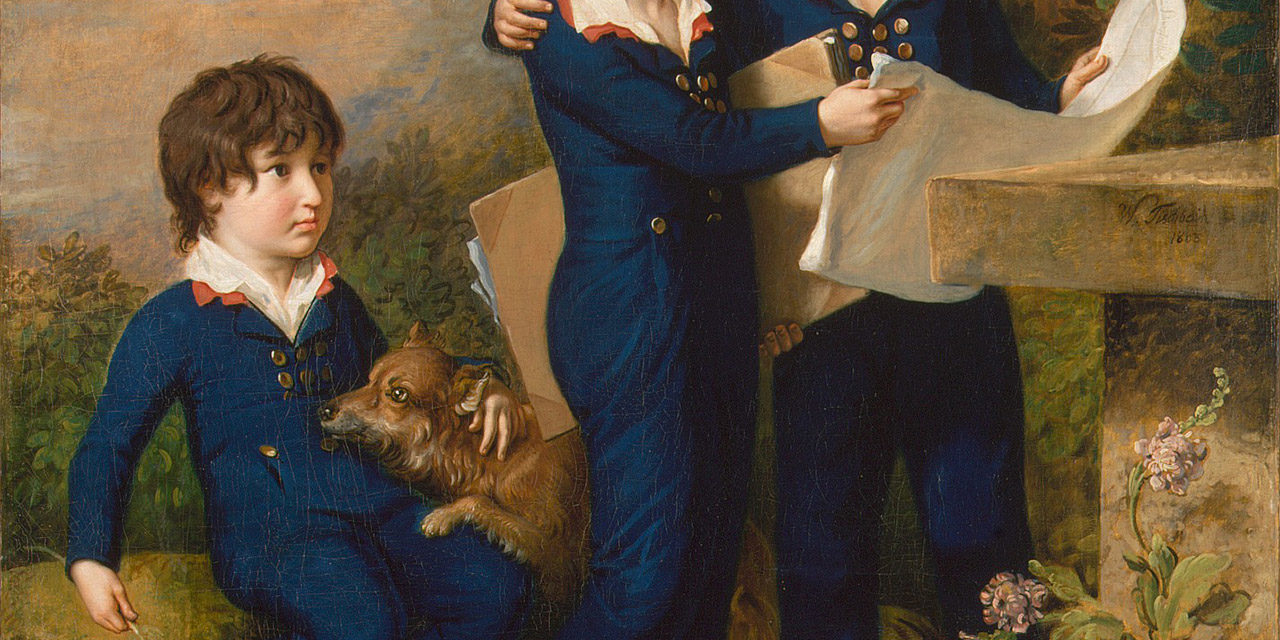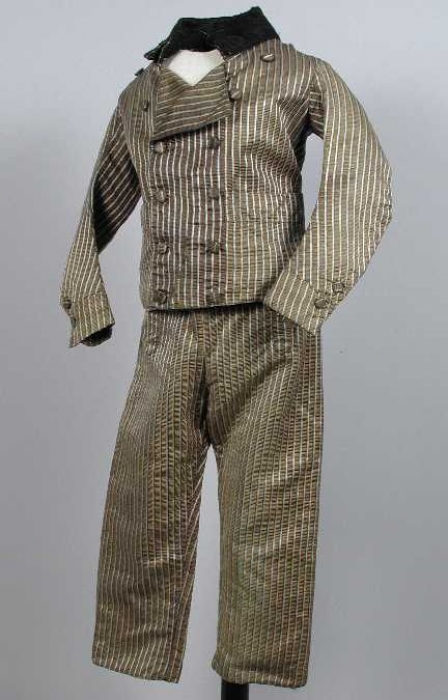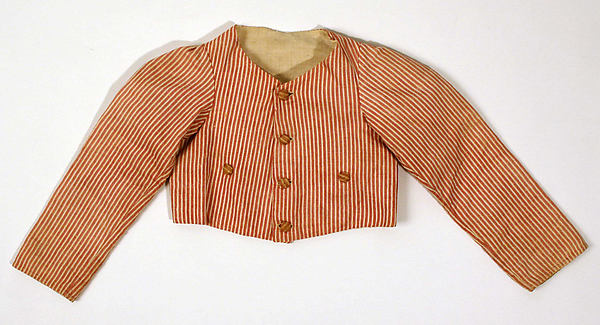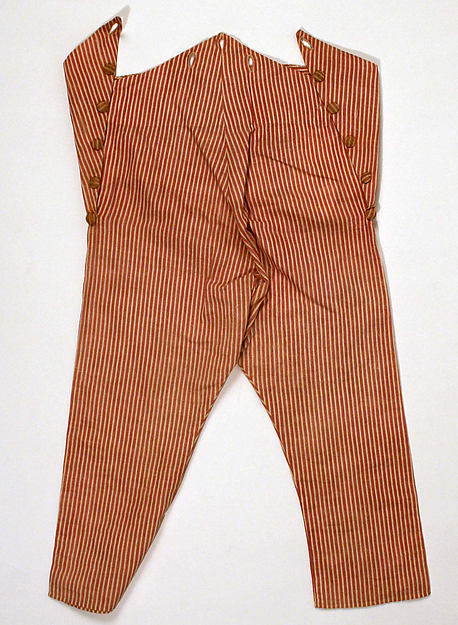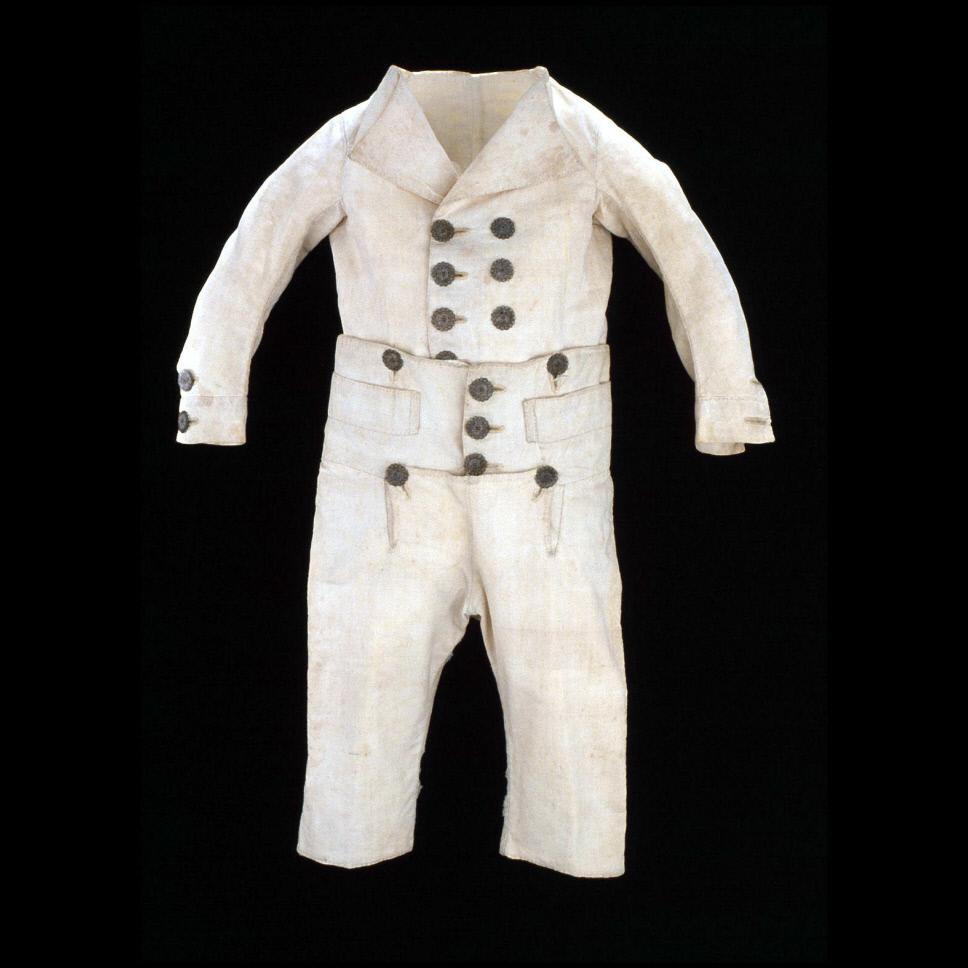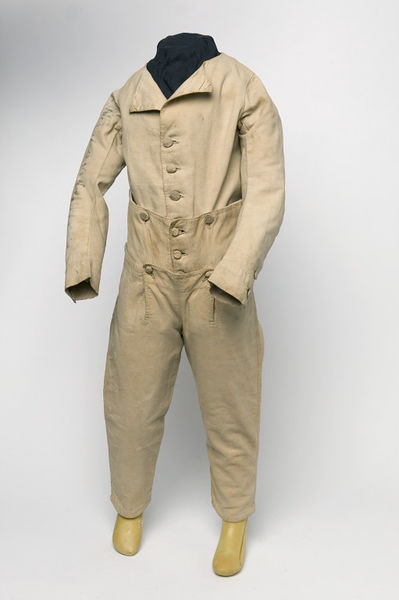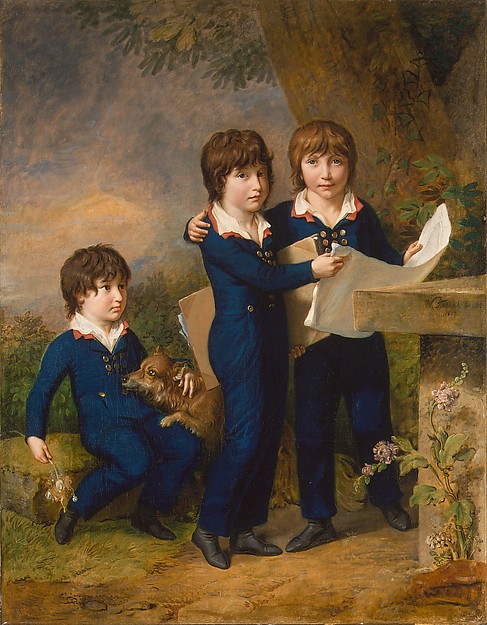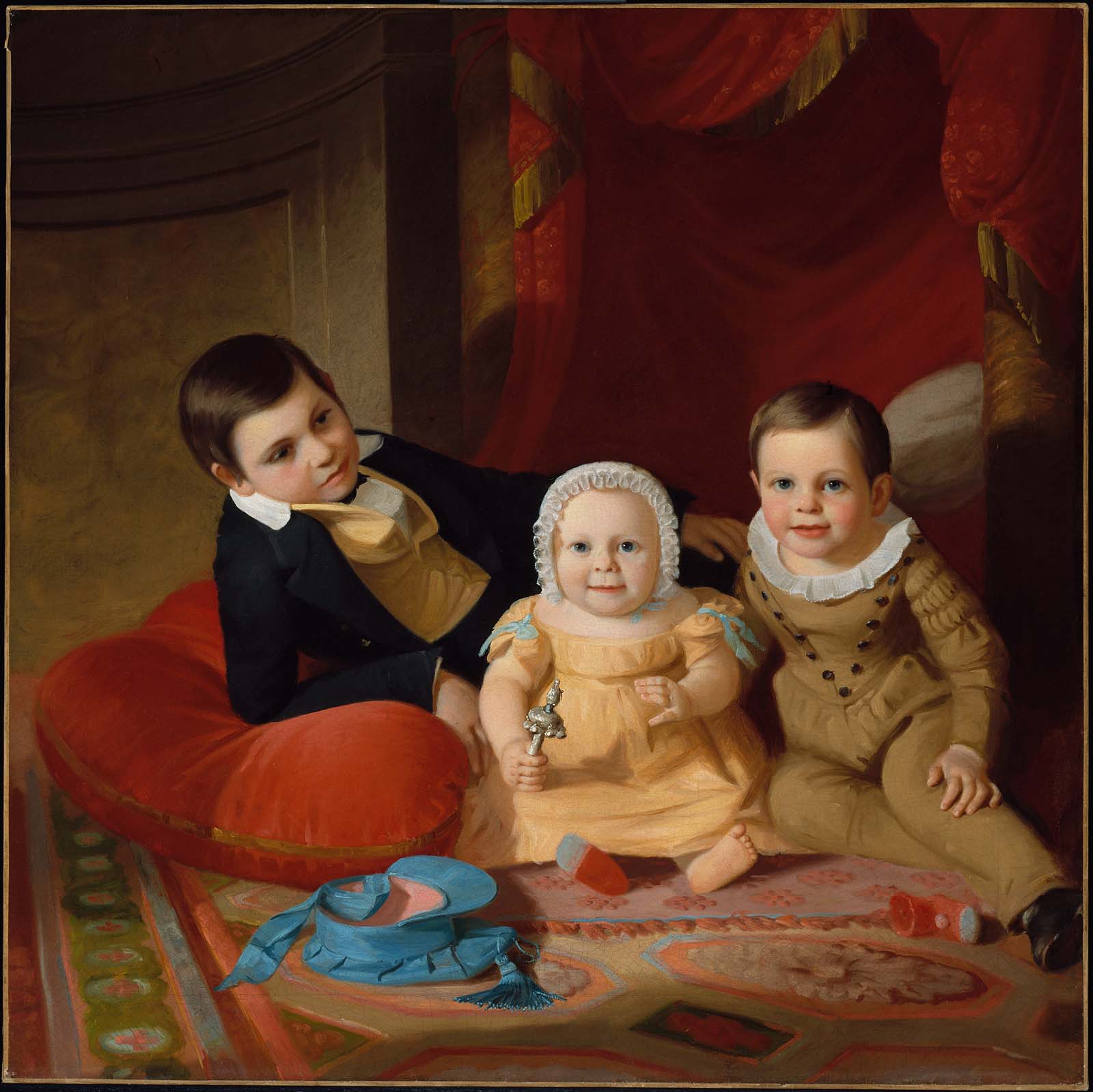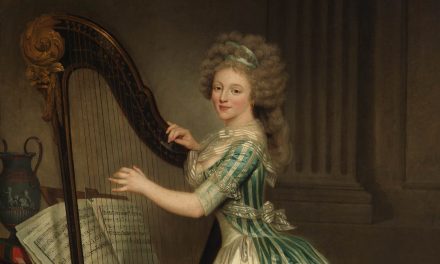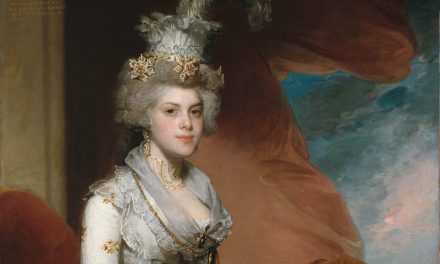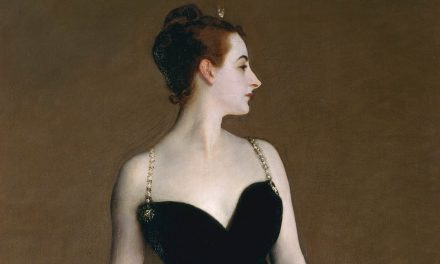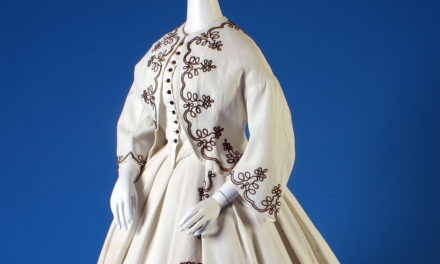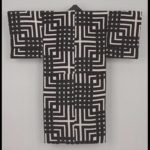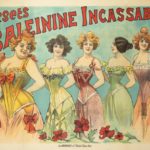Late 18th & early 19th-century play wear for boys that consists of two pieces–a fitted jacket and trousers–that button together.
The Details
The Fairchild Dictionary of Fashion (2014) defines a skeleton suit as: “a boy’s suit worn from 1790 to 1830, consisting of a short, tight jacket and ankle-length trousers buttoned to the jacket at the waist” (420). The 18th-century skeleton suit in the Museum Rotterdam shows how fitted the suit was to a boy’s body (Fig. 1).
The Berg Encyclopedia of World Dress (2010) dates the Enlightenment-inspired garment slightly earlier:
“From the 1770s to the 1780s the boys’ Skeleton Suit represented such easy-fitting clothing. It consisted of trousers with narrow legs but a loose fit over the hips/buttocks, buttoned to a short jacket; a shirt with a wide neck opening; and a big collar edged with frills.” (462)
Fig. 1 - Designer unknown. Boy suit consisting of green / white / blue striped ribs tube (1) with black collar and waistcoat (2)., 1800-1820. Silk, linen. Rotterdam City: Museum Rotterdam, 68585-1-2. Source: Museum Rotterdam
Fig. 2 - Designer unknown (American). Skeleton suit, ca. 1820. Cotton. New York: Metropolitan Museum of Art, 1983.31a,b. Purchase, Gifts from Various Donors, 1983. Source: The Met
Fig. 3 - Designer unknown (American). Skeleton Suit, ca. 1820. Cotton. New York: The Metropolitan Museum of Art, 1883.31a,b. Purchase, Gifts from Various Donors, 1983. Source: The Met
Fig. 4 - Designer unknown (Europe, Netherlands (probably)). Boy's "Skeleton Suit", coat & trousers, 1780-1810. Suit made of cotton lined with cotton; buttons of cast and chased copper alloy. Colonial Williamsburg Foundation, 1992-138,A&B. Source: Colonial Williamsburg Foundation
Fig. 5 - Designer unknown (England (made)). Skeleton suit, ca. 1800-1805. Nankeen. London: V & A Museum, T.165&A-1915. Given by Miss E. Marian Adeney. Source: V&A
Figures 2-3 are of a surviving American, cotton, red-striped skeleton suit from 1820 in the Met’s collection. The Dutch white cotton skeleton suit (Fig. 4) made between 1780-1810 in the Colonial Williamsburg collection shows the two pieces buttoned together. Figure 5 is a boy’s skeleton suit made of a “pale yellowish cloth known as nankeen. The jacket has elbow length sleeves and a button through front, the trousers ankle length legs and a button through small fall front” (V&A).
Fig. 6 - Johann Heinrich Wilhelm Tischbein (German, 1751-1829). The Children of Martin Heckscher, 1805. Oil on canvas; 147.3 x 114.3 cm (58 x 45 in). New York: The Metropolitan Museum of Art, 2002.564. Gift of the family of August Heckscher II, in his memory, 2002. Source: The Met
Fig. 7 - John F. Francis (American, 1808-1886). Three Children, 1840. Oil on canvas; 106.68 x 106.68 cm (42 x 42 in). Boston: Museum of Fine Arts, 47.1142. Gift of Maxim Karolik for the M. and M. Karolik Collection of American Paintings, 1815-1865. Source: MFA Boston
In Johann Heinrich Wilhelm Tischbein’s 1805 portrait of the Children of Martin Heckscher (Fig. 6), all three boys are wearing blue skeleton suits. The V&A quotes Charles Dickens’ condemnation of just such outfits:
“A skeleton suit, one of those straight blue cloth cases in which small boys used to be confined before belts and tunics had come in … An ingenious contrivance for displaying the symmetry of a boy’s figure by fastening him into a very tight jacket, with an ornamental row of buttons over each shoulder and then buttoning his trousers over it so as to give his legs the appearance of being hooked on just under his arm pits. (Charles Dickens, Sketches by Boz, 1838-39.)”
In John F. Francis’s 1840 painting titled Three Children (Fig. 7), three siblings of a prominent American family each wears garments reflecting their ages; on the right sits a young boy wearing a skeleton suit. As the Dickens quotation suggests, the suits fell out of favor by mid-century.
References:
- “Skeleton Suit.” Wikipedia, September 28, 2017. https://en.wikipedia.org/w/index.php?title=Skeleton_suit&oldid=802844376.
- “Skeleton Suit.” V and A Collections, August 10, 2018. http://collections.vam.ac.uk/item/O1129110.
- “Skeleton Suits.” V&A Museum of Childhood (blog). Accessed August 10, 2018. https://www.vam.ac.uk/moc/collections/skeleton-suits/.
- “The Well-Dressed Regency Boy Wore a Skeleton Suit.” Jane Austen’s World, August 18, 2009. https://janeaustensworld.wordpress.com/2009/08/17/the-well-dressed-regency-boy-wore-a-skeleton-suit/.
- Torell, Viveka Berggren. “Children’s Clothes.” In Berg Encyclopedia of World Dress and Fashion: West Europe, edited by Lise Skov, 462–468. Oxford: Berg, 2010. Accessed October 03, 2016. http://dx.doi.org/10.2752/BEWDF/EDch8076
- Tortora, Phyllis G., Sandra J. Keiser, and Bina Abling. The Fairchild Books Dictionary of Fashion. 4th edition. New York: Fairchild Books, 2014. http://www.worldcat.org/oclc/856198340.

